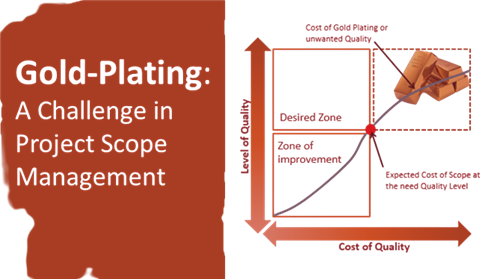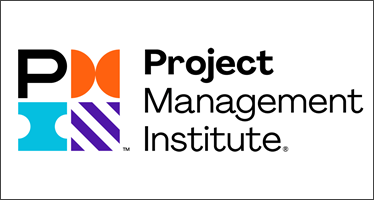What are the consequences of poor requirements with software development projects?
Last updated: December 27, 2023 Read in fullscreen view
- 02 Nov 2023
 Differences between software walkthrough, review, and inspection 1417
Differences between software walkthrough, review, and inspection 1417 - 02 Nov 2021
 What is Terms of Reference (ToR)? 1001
What is Terms of Reference (ToR)? 1001 - 18 Oct 2021
 Key Elements to Ramping Up a Large Team 820
Key Elements to Ramping Up a Large Team 820 - 15 Feb 2024
 What is a Cut-Over in Software Development? 784
What is a Cut-Over in Software Development? 784 - 03 Apr 2022
 Microsoft Solutions Framework (MSF) 780
Microsoft Solutions Framework (MSF) 780 - 01 Oct 2020
 Fail fast, learn faster with Agile methodology 695
Fail fast, learn faster with Agile methodology 695 - 01 Aug 2024
 The Standish Group report 83.9% of IT projects partially or completely fail 642
The Standish Group report 83.9% of IT projects partially or completely fail 642 - 14 Oct 2021
 Advantages and Disadvantages of Time and Material Contract (T&M) 577
Advantages and Disadvantages of Time and Material Contract (T&M) 577 - 20 Jul 2022
 Software Myths and Realities 537
Software Myths and Realities 537 - 19 Oct 2021
 Is gold plating good or bad in project management? 521
Is gold plating good or bad in project management? 521 - 13 Apr 2024
 Lessons on Teamwork and Leadership from Chinese story book "Journey to the West" 515
Lessons on Teamwork and Leadership from Chinese story book "Journey to the West" 515 - 18 Oct 2020
 How to use the "Knowns" and "Unknowns" technique to manage assumptions 493
How to use the "Knowns" and "Unknowns" technique to manage assumptions 493 - 02 May 2022
 What Is RAID in Project Management? (With Pros and Cons) 476
What Is RAID in Project Management? (With Pros and Cons) 476 - 13 Jan 2020
 Quiz: Test your understanding project cost management 455
Quiz: Test your understanding project cost management 455 - 08 Oct 2022
 KPI - The New Leadership 444
KPI - The New Leadership 444 - 06 Mar 2021
 4 things you need to do before getting an accurate quote for your software development 414
4 things you need to do before getting an accurate quote for your software development 414 - 14 Jun 2022
 Example and Excel template of a RACI chart in Software Development 406
Example and Excel template of a RACI chart in Software Development 406 - 18 Dec 2023
 The Cone of Uncertainty in Scrum & Requirement Definition 405
The Cone of Uncertainty in Scrum & Requirement Definition 405 - 01 Sep 2022
 Facts Chart: Why Do Software Projects Fail? 372
Facts Chart: Why Do Software Projects Fail? 372 - 27 Jan 2020
 Should a project manager push developers to work more hours due to mistakes of manager schedule setting? 362
Should a project manager push developers to work more hours due to mistakes of manager schedule setting? 362 - 16 Apr 2021
 Insightful Business Technology Consulting at TIGO 310
Insightful Business Technology Consulting at TIGO 310 - 23 Sep 2021
 INFOGRAPHIC: Top 9 Software Outsourcing Mistakes 300
INFOGRAPHIC: Top 9 Software Outsourcing Mistakes 300 - 07 Jul 2021
 The 5 Levels of IT Help Desk Support 278
The 5 Levels of IT Help Desk Support 278 - 12 Aug 2022
 What is End-to-end project management? 275
What is End-to-end project management? 275 - 03 Jan 2023
 Organizing your agile teams? Think about M.A.T (Mastery, Autonomy, Purpose) 270
Organizing your agile teams? Think about M.A.T (Mastery, Autonomy, Purpose) 270 - 17 Oct 2021
 Does Fast Tracking increase project cost? 259
Does Fast Tracking increase project cost? 259 - 07 Jul 2022
 Managing Project Execution Terms 257
Managing Project Execution Terms 257 - 10 Dec 2023
 Pain points of User Acceptance Testing (UAT) 254
Pain points of User Acceptance Testing (UAT) 254 - 28 Dec 2021
 8 types of pricing models in software development outsourcing 252
8 types of pricing models in software development outsourcing 252 - 19 Apr 2021
 7 Most Common Time-Wasters For Software Development 250
7 Most Common Time-Wasters For Software Development 250 - 09 May 2022
 Build one to throw away vs Second-system effect: What are differences? 245
Build one to throw away vs Second-system effect: What are differences? 245 - 11 Jan 2024
 What are the Benefits and Limitations of Augmented Intelligence? 241
What are the Benefits and Limitations of Augmented Intelligence? 241 - 13 Dec 2020
 Move fast, fail fast, fail-safe 237
Move fast, fail fast, fail-safe 237 - 31 Oct 2021
 Tips to Fail Fast With Outsourcing 228
Tips to Fail Fast With Outsourcing 228 - 26 Sep 2024
 Successful Project Management Techniques You Need to Look Out For 223
Successful Project Management Techniques You Need to Look Out For 223 - 06 Jun 2022
 Change Management at the Project Level 221
Change Management at the Project Level 221 - 06 Feb 2021
 Why fail fast and learn fast? 217
Why fail fast and learn fast? 217 - 22 May 2022
 What are common mistakes that new or inexperienced managers make? 212
What are common mistakes that new or inexperienced managers make? 212 - 06 Nov 2019
 How to Access Software Project Size? 192
How to Access Software Project Size? 192 - 10 Apr 2021
 RFP vs POC: Why the proof of concept is replacing the request for proposal 190
RFP vs POC: Why the proof of concept is replacing the request for proposal 190 - 01 May 2023
 CTO Interview Questions 189
CTO Interview Questions 189 - 03 Nov 2022
 Top questions and answers you must know before ask for software outsourcing 183
Top questions and answers you must know before ask for software outsourcing 183 - 15 May 2022
 20 Common Mistakes Made by New or Inexperienced Project Managers 179
20 Common Mistakes Made by New or Inexperienced Project Managers 179 - 01 Aug 2022
 Is planning "set it and forget it" or "set it and check it"? 174
Is planning "set it and forget it" or "set it and check it"? 174 - 07 Aug 2022
 Things to Consider When Choosing a Technology Partner 170
Things to Consider When Choosing a Technology Partner 170 - 10 Nov 2022
 Poor Code Indicators and How to Improve Your Code? 164
Poor Code Indicators and How to Improve Your Code? 164 - 02 Dec 2021
 3 Ways to Avoid Scope Creep in IT Consulting 150
3 Ways to Avoid Scope Creep in IT Consulting 150 - 09 Feb 2023
 The Challenge of Fixed-Bid Software Projects 141
The Challenge of Fixed-Bid Software Projects 141 - 20 Nov 2022
 Software Requirements Are A Communication Problem 136
Software Requirements Are A Communication Problem 136 - 26 Dec 2023
 Improving Meeting Effectiveness Through the Six Thinking Hats 136
Improving Meeting Effectiveness Through the Six Thinking Hats 136 - 07 Oct 2022
 Digital Transformation: Become a Technology Powerhouse 132
Digital Transformation: Become a Technology Powerhouse 132 - 17 Feb 2022
 Prioritizing Software Requirements with Kano Analysis 129
Prioritizing Software Requirements with Kano Analysis 129 - 01 Mar 2023
 Bug Prioritization - What are the 5 levels of priority? 129
Bug Prioritization - What are the 5 levels of priority? 129 - 10 Apr 2024
 The Parking Lot Method: Unlocking a Simple Secret to Supercharge Your Productivity 124
The Parking Lot Method: Unlocking a Simple Secret to Supercharge Your Productivity 124 - 09 Mar 2022
 Consultant Implementation Pricing 123
Consultant Implementation Pricing 123 - 10 May 2022
 Levels of Teamwork 116
Levels of Teamwork 116 - 07 Dec 2023
 12 project management myths to avoid 113
12 project management myths to avoid 113 - 01 Mar 2023
 How do you deal with disputes and conflicts that may arise during a software consulting project? 108
How do you deal with disputes and conflicts that may arise during a software consulting project? 108 - 01 Feb 2024
 How long does it take to develop software? 107
How long does it take to develop software? 107 - 02 Jun 2024
 Reviving Ancient Wisdom: The Spiritual Side of Project Management 106
Reviving Ancient Wisdom: The Spiritual Side of Project Management 106 - 09 Jan 2022
 How to Bridge the Gap Between Business and IT? 106
How to Bridge the Gap Between Business and IT? 106 - 08 Nov 2022
 4 tips for meeting tough deadlines when outsourcing projects to software vendor 106
4 tips for meeting tough deadlines when outsourcing projects to software vendor 106 - 24 Nov 2023
 The project management paradox: Achieving MORE by doing LESS 101
The project management paradox: Achieving MORE by doing LESS 101 - 30 Nov 2023
 Project Managers, Focus on Outcomes — Not Deliverables 99
Project Managers, Focus on Outcomes — Not Deliverables 99 - 05 Jan 2024
 Easy ASANA tips & tricks for you and your team 93
Easy ASANA tips & tricks for you and your team 93 - 16 Feb 2021
 Choose Outsourcing for Your Non Disclosure Agreement (NDA) 91
Choose Outsourcing for Your Non Disclosure Agreement (NDA) 91 - 02 Nov 2022
 Difference between Change Management and Project Management 89
Difference between Change Management and Project Management 89 - 21 Jun 2024
 Dead Horses and the Escalation of Commitment 84
Dead Horses and the Escalation of Commitment 84 - 05 Jun 2023
 Fractional, Part-Time (virtual) or Interim CTO: Who Will Cover Your Business Needs? 76
Fractional, Part-Time (virtual) or Interim CTO: Who Will Cover Your Business Needs? 76 - 12 Mar 2024
 How do you create FOMO in software prospects? 63
How do you create FOMO in software prospects? 63 - 23 Jun 2024
 Best Practices for Managing Project Escalations 54
Best Practices for Managing Project Escalations 54 - 14 Mar 2024
 Why should you opt for software localization from a professional agency? 51
Why should you opt for software localization from a professional agency? 51 - 01 Mar 2024
 10 Project Management Myths 47
10 Project Management Myths 47 - 17 Mar 2025
 IT Consultants in Digital Transformation 33
IT Consultants in Digital Transformation 33
Poor definition of software requirements can lead to failure of software development projects
Software development requirements are pivotal and central to every successful software development project. Poor requirements practices alone can doom any application development process. No matter how well designed and constructed or well tested an application might be, it is essentially useless if it fails to meet the business needs.
Defects in software development requirements are the sources of the majority of defects that are identified during testing and problems with requirements are among the top causes of project failure.
Common software development requirements problems include incomplete or inaccurate requirements, poorly managed requirements change and missed requirements. The first step of requirements management is accurately capturing the requirements and defining it. Confusion about what is required pretty much guarantees the requirements will not be met and increases the chance of product failure.
The inability to identify all the impacts and notify anyone impacted by a change leads to poor change management. A poorly executed change means wasted efforts, outdated information and design conflict. This drives up cost and creates project delay.
Significant documentation is required of companies who must comply with regulations or meet standards. Those that lack requirements traceability must invest significant time preparing records to prove compliance. Those that have traceability have a far easier time producing reports and records that support compliance as they can automatically trace the regulatory down to the details proving it was satisfied
Improving software investments through requirements validation
IT organizations are increasingly being expected to provide business solutions faster and with better return on investments (ROIs). Their limited technology focus on software fails to deliver predictable, relevant and cost effective solutions. The electronic customer contact management (ECCM) toolkit was designed to rectify the most pervasive problem in software development that is, the known fact that requirements specifications are always incomplete, inaccurate and wrong. The toolkit was used to implement a human-centric solution in a wireless center.
The solution was driven by productivity improvements in center operations and not by technology. The solution produced measurable improvements in the robustness and effectiveness of center operations, providing the business an ROI of less than 18 months. The ECCM toolkit tackles this business challenge by delivering: validated software requirements in areas such as service, operations and marketing while guaranteeing the investment's ROI through faster cycle times (e.g., one software release per week or faster); tools required by work center management to professionally manage both center resources and enhancements to the team's process-maturity level; and effective change management capabilities to maintain center productivity during the ongoing demand for new capabilities. This need became apparent only after the software bottleneck was eliminated






















